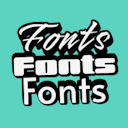Product
Templates
Resources
Company
Home
Blog
Tutorials
The 7 elements of art: A guide for aspiring artists
The 7 elements of art: A guide for aspiring artists

Did you know that Leonardo da Vinci was such a meticulous artist that he spent about four years painting the Mona Lisa's lips?
Understanding the 7 elements of art—line, shape, form, space, value, color, and texture—is crucial for any aspiring artist. These elements are the building blocks of visual art, guiding you in creating compelling and balanced compositions.
Mastering these elements isn't just about technique; it's about effectively conveying your unique vision and emotions.
So, let's embark on this journey together, exploring each element and discovering how they can transform your artistic endeavors.
7 elements of art
7 elements of art and how artists can use them to emphasize a focal point in their work
You have heard of the principles of design. Now, let’s focus on the elements of art and break them down, one at a time.
01. Line

Imagine standing in front of a blank canvas, pencil in hand. The first thing you do? You make a line. That simple mark—whether bold, delicate, jagged, or smooth—is the foundation of all visual art.
A master of expressive line work, once said,
“Line is the root of all art.”
”Vincent van Gogh
His paintings prove this—just look at The Starry Night. The swirling, curved lines make the sky feel alive, full of energy and motion. Contrast this with his drawing Worn Out, where heavy, sagging lines define a hunched figure weighed down by exhaustion. One radiates movement and wonder, the other, sorrow and weariness.
If you ask us, what makes a line so powerful, it’s because they tell stories, convey emotions, and guide the viewer’s eye through a piece. Consider how different types of lines change the way we perceive an artwork:
- Horizontal lines: Stability, calmness, and relaxation. Think of a serene landscape where the horizon stretches endlessly.
- Vertical lines: Strength, power, and spirituality. Cathedral pillars or towering skyscrapers give a sense of grandeur.
- Diagonal lines: Action, movement, and tension. They create a sense of dynamism, like a figure caught mid-stride or a lightning bolt splitting the sky.
- Curved lines: Flow, grace, and elegance. From soft waves in a painting to the whimsical spirals in Art Nouveau designs, curved lines add rhythm and motion.
- Zigzag and jagged lines: Energy, chaos, and excitement. A zigzag can represent electricity, unpredictability, or even aggression.
In digital design, you can use lines practically anywhere:
- Use varying line weights – Thicker lines draw attention, while thinner lines recede. This is crucial in logo design and illustrations where depth matters.
- Experiment with overlapping lines – Crossing lines can create patterns, textures, or even an illusion of depth.
- Break the line – A dashed or broken line can imply motion or transition, which works great in infographics and UX/UI design.
- Play with direction – Diagonal and curved lines can lead the viewer’s eye in a specific direction, helping to establish visual flow.
Some examples:
02. Shape

If lines are the foundation of art, shapes are its building blocks. Every piece of visual art, from ancient cave paintings to modern graphic design, is made up of shapes—some deliberate, some implied.
At its core, a shape is a closed contour—a line that loops back to meet itself, forming a recognizable form. But don’t let that simplicity fool you.
Great artists have always understood the psychology of shapes and their power to create impact.
Wassily Kandinsky, a pioneer of abstract art, used repetition of geometric shapes to build rhythm and energy, while Henri Matisse crafted entire compositions from cut-paper organic forms, proving that even the simplest shapes can tell a story.
When we think about shapes, they fall into two broad categories:
- Geometric shapes: Precise, mathematical, and structured—these include circles, squares, triangles, hexagons, and more. They feel stable, predictable, and reliable. Think of logos for banks, tech companies, and corporate brands—many rely on squares and rectangles to project trust and strength. Triangles, when pointing upward, suggest progress and ambition. A downward triangle, however, can feel unstable.
- Organic shapes: Freeform, irregular, and often inspired by nature. These feel soft, spontaneous, and alive—like the silhouette of a leaf, the curves of a river, or the outline of a cloud. They create a sense of movement and are commonly used in designs that need to feel natural, artistic, or fluid.
Shapes aren’t just decorative—they guide the eye and create meaning in a composition. To demonstrate, let us show you the difference and how you can use different shapes in your designs.
- Big, bold shapes command attention and create a strong, stable composition.
- Smaller, scattered shapes can suggest delicacy, motion, or even chaos.
In abstract art, repeated shapes build harmony or contrast. A series of concentric circles can create a sense of calm and meditation, while jagged, overlapping triangles feel sharp, aggressive, and intense. Another idea you could use: Play around with text and fit it into any shape you like by using the transform function in your editor.
Some examples in our templates:
03. Form

Ever wonder how a simple drawing of a ball suddenly looks like it could roll right off the page?
That’s the magic of form—the element of art that adds depth and dimension, making a shape feel real.
During the Renaissance, Leonardo da Vinci mastered these techniques, making his paintings look like windows into another world. He used atmospheric perspective—fading colors and reducing contrast as objects got farther away—to create the illusion of depth.
If you’ve ever seen a landscape where distant mountains look hazy and blue, you’ve witnessed this effect in real life. This ability to trick the eye with light, shadow, and perspective transformed flat paintings into lifelike scenes, a skill that remains essential in art and design today.
At its core, form is shape with depth. A square becomes a cube. A circle turns into a sphere. It’s what separates a flat, two-dimensional (2D) design from something that feels three-dimensional (3D), even if it’s drawn on a flat surface.
Like shapes, form can exist in two ways:
- Actual form – Found in sculptures, architecture, and physical objects you can touch and walk around. Think of Michelangelo’s David or a ceramic vase.
- Implied form – A clever trick used in drawing, painting, and digital art to create the illusion of 3D depth on a 2D surface.
Since most graphic design happens on a screen or paper, we rely on implied form to bring depth and realism to compositions.
There are several techniques digital designers can make something look three-dimensional:
- Light and shadow: Adding highlights and shading transforms a flat shape into a realistic form.
- Gradients: A smooth transition from light to dark makes a sphere look round instead of flat.
- Hatching and cross-hatching: Parallel and intersecting lines create shading, a technique used by Rembrandt and classic pen-and-ink artists.
- Perspective: Drawing objects smaller as they recede into the distance or using vanishing points makes a scene feel real.
Da Vinci and other Renaissance painters combined these techniques to make buildings, people, and landscapes feel tangible. In digital design, we can use similar principles to create a sense of space and depth, even in flat compositions:
- Drop shadows – Make an object appear raised or floating above the background. Kittl includes this feature, especially for text, allowing designers to add subtle or dramatic depth with adjustable blur, angle, and opacity.
- 3D text effects – Add depth and volume to lettering, giving it a bold, extruded look. This is perfect for eye-catching headlines, logos, or stylized typography.
- Layering shapes – Offsetting and stacking shapes can simulate depth, even in flat designs.
- Perspective grids – Aligning objects along vanishing points can make designs feel structured and three-dimensional.
A well-placed shadow or gradient is often all it takes to turn a flat shape into something visually engaging. Too much detail can overwhelm a design, but just enough depth makes it feel polished and intentional.
Some of our favorite designs:
04. Space

Ever looked at a piece of art or a design and felt like something was just... off? Maybe everything felt too cluttered, or there was too much emptiness. That’s space at work—the often-overlooked element that makes or breaks a composition.
Space in art isn’t just about what’s there, but also what isn’t. It’s the area in and around objects, controlling how elements interact, stand out, or blend together.
Think of it as the breathing room in a design—too little, and everything feels cramped; too much, and it can feel disconnected.
In every composition, there are two types of space:
- Positive Space – The main subject of your artwork or design. The objects, shapes, or elements you deliberately place.
- Negative Space – The empty space around and between objects. Far from being wasted, it balances the composition and directs the viewer’s focus.
For example, picture a lone tree on a hill. The tree itself is positive space, but the vast sky around it? That’s negative space. If the sky is large and open, it might create a feeling of freedom or solitude. If the tree is tightly surrounded by other elements, it might feel enclosed or trapped.
Space is also a key player in depth perception—how we make a flat surface feel three-dimensional. Artists, digital or traditional, have developed several techniques to create a sense of spatial depth:
- Give elements breathing room – Increase spacing between objects to prevent clutter and improve focus.
- Use overlapping for depth – When one object covers another, it naturally appears closer, creating a sense of layering.
- Adjust size for hierarchy – Larger elements grab attention, while smaller ones recede into the background.
- Position objects with intent – Lower placement feels closer, while higher placement suggests distance.
- Apply atmospheric perspective – Reduce contrast and saturation for distant elements to create a fading effect.
- Use alignment tools – Grids and guides help maintain clean, balanced layouts.
- Layer strategically – Arrange elements into foreground, midground, and background for a natural sense of depth.
Renaissance painters combined these techniques masterfully. Look at the background hills in Mona Lisa—they fade into a misty blue, receding softly into the distance. These tricks turn a flat canvas into a window with layers of space.
05. Value

Ever wondered why some designs feel bold and striking while others seem flat and uninteresting? Value refers to how light or dark a color or tone is, and it’s one of the most important elements for creating contrast, depth, and visual impact.
Think of a black-and-white photograph. Without color, all that remains is value—shades of gray from deep black to bright white. If the values are strong, the image looks dramatic and well-balanced. But if everything is mid-gray, it loses its impact and feels dull.
A well-balanced design uses a range of values—highlights, midtones, and shadows—to guide the viewer’s eye and create focus and clarity.
Value matters in art and design for a number of reasons:
- Defines form – Light and shadow create the illusion of three-dimensionality, making objects appear solid.
- Creates contrast – High-contrast areas grab attention, while low contrast feels softer and more subtle.
- Controls mood – A high-key (mostly light) composition feels clean and airy, while a low-key (mostly dark) design feels dramatic and moody.
- Guides the eye – Our eyes are naturally drawn to the lightest or darkest areas in a composition.
Getting value right can make or break a composition. Strong contrast ensures clarity, while subtle shading adds depth.
To increase focus, readability, and mood, here are ways you can use value effectively:
- Check your contrast – Convert your design to grayscale to see if it still works. If details disappear, adjust the values. A well-balanced composition should have a mix of highlights, midtones, and shadows to keep it visually engaging.
- Create focal points – The area of highest contrast naturally draws the most attention. If a design lacks a strong value difference, it can feel flat.
- Use shading techniques – Gradients, hatching, and drop shadows help create depth and structure. In digital design, subtle shadows and highlights make text or graphics stand out.
- Typography contrast matters – Light text on a dark background (or vice versa) ensures readability. Poor contrast between text and background makes information harder to digest.
- Make smart background choices – Dark backgrounds make bright colors pop, while light backgrounds feel clean and spacious. This balance can dramatically change a design’s tone and impact.
- Use texture to enhance value – A little noise or grain can break up solid areas and add richness to transitions between light and dark. This prevents a design from looking too flat or sterile.
Kittl template examples:
06. Color

Claude Monet, the master of Impressionism, used color brilliantly. In Impression, Sunrise, he placed a vivid orange sun against a cool blue mist, making it the focal point.
His haystack series proved how color alone could change the entire mood—warm golden hues made the scene feel bright and inviting, while purples and blues at dusk created a sense of quiet and calm.
That’s the power of color. Before we process details like shape or typography, our brains instantly react to color—it sets the mood, emotion, and overall tone of an artwork or design.
Hue, saturation, and value are the three key components of color. Hue is what we usually call “color” (red, blue, green), saturation refers to its intensity (vivid vs. muted), and value determines how light or dark a color is.
While artists and designers use color harmonies from the color wheel to create balance:
- Complementary colors (opposites like blue and orange) create strong contrast.
- Analogous colors (next to each other like blue, teal, and green) feel harmonious.
- Triadic colors (three evenly spaced, like red, yellow, and blue) create a dynamic balance.
In digital design, choosing the right color combination is a pivotal step.
- Contrast and readability – Light text on a dark background (or vice versa) ensures clarity.
- Gradients for depth – A smooth color transition makes backgrounds and elements more engaging.
- Color grading for consistency – Adjusting overall tones (adding a warm or cool tint) makes everything feel unified.
A common trick for stronger designs is limiting the color palette. Many professional designs stick to two or three main colors plus neutral tones like black, white, or gray. This makes the design look cohesive and intentional, rather than chaotic.
Pro tip: Before finalizing a design, always test your colors. A great way to check balance is to convert the design to grayscale—if key elements disappear or blend together, you may need to adjust contrast. Online contrast checkers can also help ensure accessibility, especially for text.
07. Texture

Texture is the element of art that makes something look like it has a surface quality, whether it’s rough, smooth, soft, or glossy.
In traditional art, texture can be real (like thick brushstrokes in a painting) or implied (an illusion of texture created through shading and patterns).
Comic book artists use stippling (tiny dots) and cross-hatching to create implied texture—a way to make a character’s leather jacket look rugged or a stone wall appear weathered, all on smooth paper.
Bottom line is, in digital design–where everything exists on a smooth screen, texture is a secret weapon for adding depth and realism. Instead of relying on physical materials, designers use textured overlays and patterns to give a design character.
- Grunge textures add a distressed, vintage feel—perfect for posters, apparel, and branding.
- Paper textures create warmth and an organic feel, great for invitations and editorial design.
- Halftone and grain textures give designs a retro or print-like quality, commonly seen in branding and social media graphics.
- Marble or abstract metal textures are trending in 2025, adding a sleek, high-end touch to backgrounds and packaging.
- Natural shadows and fabric textures make digital designs feel more lifelike, useful for mockups and product photography.
Pro tip: In Kittl, you can explore a variety of textures and apply them as masks, allowing you to add texture to specific elements—like giving text a weathered, printed look on rough fabric without altering the background. You also have the option to release a texture from a clipped object, giving you more control over its placement and blending for a customized effect.
Interrelation of elements of art
Great art isn’t just about using one element—it’s about how they all work together.
Line, shape, form, space, texture, value, and color each bring something to the table, but when combined thoughtfully, they take a piece from simple representation to something truly expressive.
Think about how line and color can set the mood. A bold, jagged line in fiery red can feel intense and urgent, while soft, flowing lines in pastel hues create a sense of calm.
Texture and value also play a huge role in depth—add a rough, uneven texture with strong light and dark contrast, and suddenly, a flat surface starts to look three-dimensional. These elements don’t just coexist; they enhance each other to make art more dynamic and compelling.
Case study: Vincent van Gogh's "The Starry Night"

Van Gogh’s The Starry Night is a perfect example of how the elements of art work together to create something unforgettable. Those swirling lines don’t just fill the sky—they make it feel alive, pulling your eye across the canvas with movement and energy.
The contrast between the bright stars and the deep night sky adds depth, making the scene feel almost endless. And let’s not forget the thick, textured brushstrokes—you can practically feel the paint, adding a raw, emotional intensity.
The rich blues and glowing yellows create harmony, balancing warmth and coolness in a way that feels both calming and electric. Every element plays off the others, proving that great art isn’t just about technique—it’s about how all the pieces come together to make you feel something.
Practical exercises and applications for artists using the 7 elements of art
Want to integrate these elements effectively into your own art? Then you’d want to consider the following exercises:
- Gesture drawing: Spend 1-2 minutes capturing the essence of a subject with quick, expressive lines. This practice enhances observation skills and the ability to convey movement.
- Texture exploration: Experiment by creating different textures using various tools and techniques, such as stippling or cross-hatching, to understand their impact on the overall feel of your artwork.
- Value studies: Create grayscale versions of your compositions to focus on light and dark areas, ensuring a balanced distribution of values that guide the viewer's eye.
- Color scheming: Develop color palettes based on color theory principles, like complementary or analogous schemes, to see how different combinations affect mood and harmony.
- Observing art elements in your daily life: Pay attention to the visual world around you to strengthen your artistic eye. On nature walks, notice the lines and shapes in tree branches, the textures of leaves, and how light and shadow shift throughout the day. In urban spaces, look for geometric forms in architecture, patterns created by overlapping structures, and how color palettes shape different environments. Practice mindful observation by studying everyday objects—focus on their textures, forms, and the way light interacts with them to build a stronger mental library for your art.
Bringing the 7 elements of art into your work
The 7 elements of art are more than just theory—they’re the foundation of every great design. Whether you’re playing with line to create energy, color to set a mood, or texture to add depth, each element helps shape your artistic voice.
The best way to improve? Keep experimenting. Try new techniques, observe how these elements appear in everyday life, and most importantly—have fun with the process.
And if you’re looking for an easy way to explore composition, contrast, and texture, Kittl makes it simple to bring your ideas to life.
So grab your sketchbook, open your design software, and start creating. Because the more you practice, the more these elements will come naturally—and that’s when the real magic happens.
Related articles

News
DIY funny shirts: How you can create & sell to make money
"Why did the graphic designer go to therapy? Because she had too many layers to deal with."

Inspiration
Font pairing 101: The ultimate guide to choosing the perfect fonts
Ever noticed how some designs just feel right, while others seem off, even if you can’t quite put yo...

Inspiration
30 neon color palettes & how to use neon colors in branding and design
Did you know neon colors can boost brand visibility by up to 70%? Their intense vibrancy makes them ...




























